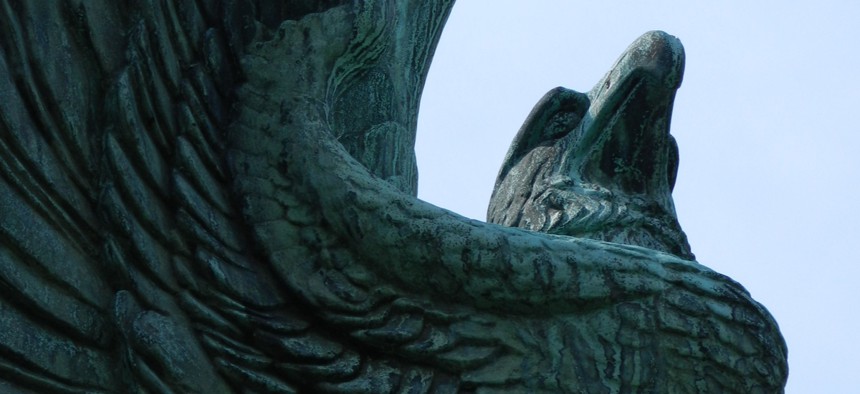Exploring Pittsburgh’s War Monuments and Memorials Inventory

A bronze eagle that's part of a First World War Monument at West End Park in Pittsburgh. Shutterstock
The city's guide currently includes 120 locations and is still a work in progress.
In a city with a long and storied history like Pittsburgh, which founded in the 1750s, there are countless monuments, memorials and other landmarks that can be found in high-profile locations and in tucked-away in parks and other public spaces.
In fact, Pittsburgh’s Department of City Planning and the organizations it works with are still counting.
The Public Art and Civic Design division of the department has a War Monument and Memorial Inventory, which currently has 120 monuments. The inventory can also be explored with an online map, which links to individual profiles in the .pdf guide.
The inventory is still a work in progress. The city notes that citizens can review the current version and contact the Department of City Planning if:
- corrections need to be made;
- any additional war monuments pertaining to any war or individuals connected to an American conflict exist, that are not noted in this inventory;
- any honor rolls exist that are not included in this inventory
So, what can you discover poking around the map and inventory?
Pictured here are the Boulevard of the Allies Memorial Columns, erected in 1922 at the corner of the boulevard and Grant Street, an important gateway to the downtown area from the east.

And below is the Honor Roll memorial in the Polish Hill neighborhood erected in 1976 at a sharp corner opposite the Immaculate Heart of Mary Church at Brereton and Dobson streets.

To compile the inventory, the city worked with the the Soldiers and Sailors Memorial Hall and Museum, the Senator John Heinz History Center, the Northside Leadership Conference and various veterans and community organizations.
The effort to inventory the war monuments and memorial may lead to do the same for street art and privately owned murals.
"A big goal is to have this art be presented as something that is very present in people's lives," Tony Cavalline, the Public Art and Civic Design Division's arts, history, and culture specialist, recently told WESA-FM, a Pittsburgh public radio station. "And people can really get a sense of how the artwork has affected their neighborhood, [and] how it has been a presence in the neighborhood where they live throughout the years."
Michael Grass is Executive Editor of Government Executive's Route Fifty and is based in Seattle.
NEXT STORY: Police Records Case Puts City Hall on the Hook for Major Penalties and Fees






